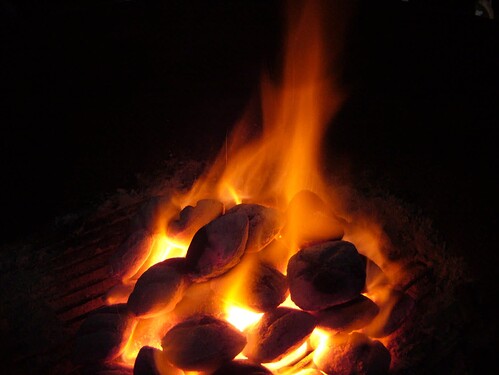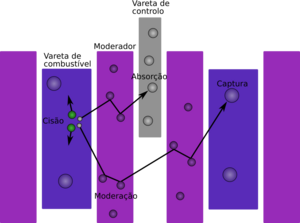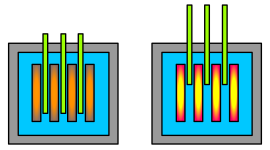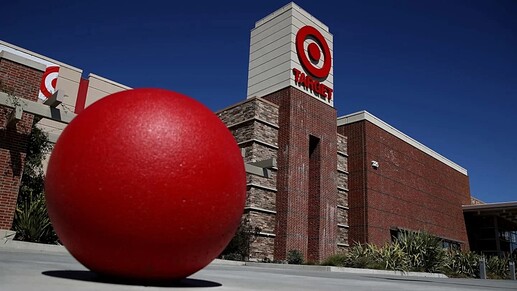
you get
![]()
/cdn.vox-cdn.com/uploads/chorus_asset/file/13973320/download.jpeg)
but why
also
:max_bytes(150000):strip_icc()/TRIPSAVVY-8-best-boots-for-snowshoeing-4172270-final-01-bc7e6d878d0f4d95aa7c3d1efe86e403.jpg)
snow shoes (:


Are these bootlegged toys from China?
Also, who needs five Matthews?
They’re made by a dude named Obvious Plant, makes a bunch of satirical toys

↑
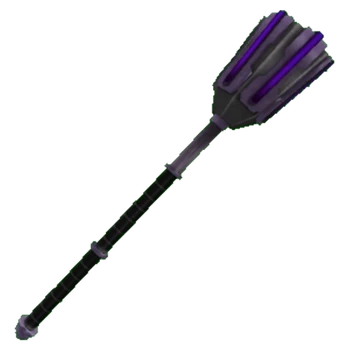
#A full Nuclear reactor text for you study
A nuclear reactor ( AO 1945 : nuclear reactor) is a hermetic cooling chamber, shielded against radiation , where a nuclear reaction is controlled to obtain energy , production of fissionable materials such as plutonium for nuclear weapons , radioisotopes for nuclear medicine , propulsion of ships , submarines and artificial satellites or for research. [ 1 ] [ 2 ]
A nuclear power plant can contain several reactors. Currently, only nuclear fission reactors are used for commercial energy production, but nuclear fusion reactors are being used in an experimental phase.
Simply put, early versions of a nuclear reactor produce heat by splitting atoms , unlike conventional power stations, which produce heat by burning fuel . The heat is used to produce water vapour , which will run steam turbines to generate electricity . A reactor produces large amounts of heat and intense streams of neutron and gamma radiation . Both are deadly to all life in even small amounts, causing disease , leukemia , and ultimately death .![]() The reactor must be surrounded by a thick cement and steel shield to prevent harmful radiation leaks. Radioactive materials are handled by remote control and stored in lead containers , an excellent shield against radiation. According to IAEA reports , in 2014 there were 435 nuclear reactors in operation in 31 countries around the globe. [ 3 ] That number increased in 2017 to 447 operable reactors according to the World Nuclear Association . [ 4 ]
The reactor must be surrounded by a thick cement and steel shield to prevent harmful radiation leaks. Radioactive materials are handled by remote control and stored in lead containers , an excellent shield against radiation. According to IAEA reports , in 2014 there were 435 nuclear reactors in operation in 31 countries around the globe. [ 3 ] That number increased in 2017 to 447 operable reactors according to the World Nuclear Association . [ 4 ]
fission reactors
Control rods in the core, made of neutron -absorbing materials , make it possible to regulate the pace of fission. These will be inserted or removed depending on the need for stabilization.
In a nuclear fission reactor, natural uranium is used , in most cases - a mixture of U-238 ( Uranium-238 ) and U-235 ( Uranium-235 ) - sometimes enriched with extra U-235. U-238 has a tendency to absorb high-speed neutrons ( pt-BR ) or neutrons ( pt-PT ? ) from splitting U-235 atoms, but it does not absorb slow neutrons as quickly. Thus, a nuclear moderating substance is included in a reactor which, together with uranium, slows down neutrons. U-238, on the other hand, no longer absorbs them so easily and the fission continues.
A nuclear fission reactor essentially has the following parts:
- Nuclear fuel : fissile and/or fertile isotope (one that can be converted to fissile by neutron activation ): Uranium-233 , Uranium-235 , Uranium-238 , Plutonium-239 , Thorium-232 , or mixtures of these (the typical fuel today is MOX , a mixture of uranium and plutonium oxides ).
- Nuclear moderator : light water , heavy water , helium , graphite , metallic sodium : they fulfill the function of reducing the speed of neutrons produced in fission, so that they can reach other fissionable atoms maintaining the reaction.
- Cooler : light water , heavy water , carbon dioxide , helium , metallic sodium conduct the heat produced during the process to the turbine generating electricity or the propellant.
- Neutron reflector ( light water , heavy water , graphite , uranium ): reduces neutron leakage increasing reactor efficiency.
- Shielding ( concrete , lead , steel , light water ): Prevents gamma radiation and fast neutron leakage.
- Control material ( cadmium or boron ): ends the chain reaction, as both are excellent neutron absorbers. They are generally used in the form of bars (made of bored steel, for example) or well dissolved in the refrigerator.
- Safety Elements : all fission nuclear power plants have multiple active (which respond to electrical signals) and passive (which act naturally like gravity , for example) safety systems. Concrete ( European Portuguese ) or concrete ( Brazilian Portuguese ) containment surrounding the reactors is the main safety system and is intended to prevent radiation leakage to the outside.
The reactor core is built inside a strong steel container that contains fuel rods made of fissile (fissile) materials enclosed in tubes. These rods produce heat as the fuel undergoes splitting (fission). Control rods , generally made of boron or cadmium - to easily absorb neutrons - are introduced and removed from the nucleus, as needed, to stabilize the reaction, varying the neutron current in the nucleus, controlling the rate of fission and, therefore, the heat produced. The rods are surrounded by a moderator, which slows down the speed at which neutronsare produced by the fuel. A liquid or gaseous coolant runs through the core, which, when heated by the heat released, generates water vapor that will be channeled to turbines .
Mechanism
An induced nuclear fission event. A neutron is absorbed by the nucleus of a uranium-235 atom , which in turn splits into lighter elements ( fission products ) and free neutrons. Both nuclear reactors and nuclear weapons use nuclear chain reactions, but the rate of nuclear reactions in a reactor occurs much slower than in a bomb.
Just as conventional thermoelectric power plants generate electrical energy by converting the thermal energy released by burning fossil fuels , nuclear reactors convert the energy released by controlled nuclear fission into thermal energy for later conversion into mechanical or electrical forms.
Fission
When a large fissile atomic nucleus such as uranium-235 or plutonium-239 absorbs a neutron, it can undergo nuclear fission. The heavy nucleus splits into two or more lighter nuclei (the products of fission), releasing kinetic energy , gamma rays , and free neutrons . A part of these free neutrons can later be absorbed by other fissile atoms and later trigger new fission events, which release more energy. This is known as a chain reaction . One of these events among several possible ones is:
{\displaystyle ^{235}U+n\quad \rightarrow \quad ^{92}K_{r}+^{142}B_{a}+3_{n}+179,4;MeV}
To control these chain reactions neutron absorbers and neutron moderators are used; they can change the portion of neutrons that will cause the most fission. [ 5 ] Nuclear reactors usually have automatic and manual systems to shut down the fission reaction if the monitoring system detects dangerous conditions. [ 6 ]
Moderators that are commonly used include light water (in 74.8% of reactors worldwide), solid graphite (20% of reactors) and heavy water (5% of reactors). Some experimental types of reactors have used beryllium and hydrocarbons have been suggested as another possibility. [ 5 ] [ not in the cited source ]
heat generation
The reactor core generates heat in a variety of ways:
- The kinetic energy of the fission products is converted into thermal energy when the nuclei collide with nearby atoms.
- The reactor absorbs some of the gamma radiation produced during fission and converts its energy into heat.
- Heat is produced by the radioactive decay of fission products and materials have been activated by neutron absorption . This radioactive decay heat source will continue for some time even if the reactor is shut down.
A kilogram of uranium-235 (U-235) converted by the nuclear process releases approximately three million times more energy than a kilogram of conventionally burned coal (7.2 × 10 13 joules per kilogram of U-235 versus 2.4 × 10 7 joules per kg of charcoal). [ 7 ] [ 8 ]
refrigeration
A nuclear reactor coolant circulates through the reactor core to absorb the heat it generates, usually water is used but sometimes a gas, liquid metal (such as sodium ) or molten salt is also used. Heat is removed from the reactor and is then used to generate steam. Most reactor designs employ a cooling system that is physically separate from the water that will be boiled to produce pressurized steam for the turbines, like any pressurized water reactor . However, in some reactors the water from the steam turbines is boiled directly by the reactor core ; such as a BWR type reactor . [ 9 ]
reactivity control
The rate of fission within a reactor core can be adjusted by controlling the amount of neutrons that are capable of inducing further fission events later. Nuclear reactors typically use various neutron control methods to adjust reactor power. Some of these methods come naturally from radioactive decay physics and are simply considered during reactor operation, while other mechanisms are built into the reactor design for a different purpose.
With the control rods down, the reaction is subcritical: too many neutrons are absorbed for a chain reaction to occur . Raising the rods makes the reactor critical and the fuel rods start producing heat.
The quickest method of adjusting the fission-inducing neutron levels is by moving control rods . Control rods are made of neutron-absorbing materials and therefore tend to absorb neutrons. When a control rod is inserted deep into the reactor, it absorbs more neutrons than the moderator. This action results in fewer neutrons available to cause fissions and reduces reactor power . Conversely, extracting the control rod from the reactor will result in an increase in fission rates, hence an increase in power.
The physics of radioactive decay also affects neutron populations in reactors. One such process is the emission of slow neutrons by a number of isotopes whose fissions are rich in neutrons. These delayed neutrons account for about 0.65% of the total neutrons produced in a fission, with the remainder (called " ready neutrons ") being those released immediately after fission. Fission products that produce delayed neutrons have half-lives from milliseconds to a few minutes, decaying by neutron emission, therefore, considerable time is required to determine exactly when a reactor reaches the criticality point. Keeping the reactor in the chain-reactivity zone where delayed neutrons are “needed” to reach a critical state allows mechanical devices or human operators to control the chain reaction in “real time”. However, the time between reaching critical mass and nuclear meltdown as a result of exponentially increasing power through normal chain reactions would be too short to allow for any form of intervention. This last stage where delayed neutrons are no longer needed to maintain criticality is known as the ready criticality point .
In some reactors, the coolant also acts as a neutron moderator . A moderator increases the reactor’s power by creating fast neutrons that are released from fission to lose energy and become thermal neutrons. Thermal neutrons are more likely to cause fission than fast neutrons . If the refrigerant is also a moderator, then changes in temperature can affect the density of the refrigerant/moderator and therefore cause a change in potency. A higher temperature will cause the refrigerant to expand and make it less dense and thus less effective as a moderator.
In other reactors the coolant acts as a neutron absorber in the same way as the control rods do. In these reactors, the power can be increased by increasing the temperature of the coolant, which causes it to become less dense and thus decreases the chance of a neutron reaching the coolant and being absorbed by it. Nuclear reactors usually have both manual and automatic systems to immediately shut down the reactor in the event of an emergency shutdown. These systems insert large amounts of neutron absorbers (often boron in the form of boric acid ) into the reactor to urgently stop the reaction if dangerous operating conditions are detected or anticipated. [ 10 ]
Most types of reactors are sensitive to a process known as xenon poisoning or iodine ditching . Xenon -135 is a common fission product; it is produced in the nuclear fission process and acts as a neutron absorber and thus tends to decrease the power of the reactor or even shut it down. Accumulation of Xe-135 can be controlled by keeping operating levels high enough to destroy Xe-135 atoms shortly after it is created by absorbing a neutron. Fission also produces iodine-135 (with half-life6.57 hours), which in turn decays into Xe-135, the neutron absorber. When the reactor is shut down, iodine-135 continues to decay to Xe-135, making restarting the reactor more difficult for a day or two, while xenon-135 decays to cesium-135 (which has a half-life of 9.2 hours), which is as good a neutron absorber as xenon. This temporary state is known as an iodine moat . If enough reactivity extra capacity, the reactor can be restarted. As xenon-135 is transmutedin xenon-136, which is a much less powerful neutron absorber, the reactor experiences a “xenon burn” within hours. Control rods must be inserted later to replace the neutron absorption effect previously performed by xenon-135. Failure to follow this procedure was a key step in the Chernobyl disaster . [ 11 ]
Reactors used in marine nuclear propulsion (especially nuclear submarines ) often cannot sustain continuous power in the same way that land-based nuclear reactors generally operate, and in addition need to have long operating lives without needing to replenish the nuclear fuel inside. For this reason, many designs incorporate highly enriched uranium to counteract the effect of Xe-135 poisoning in the core when the reactor needs to operate at lower power, but still have control rods with neutron absorbers. [ 12 ]
Electric power generation
The energy released in the fission process releases heat, some of which can be converted into electrical energy. A common method of using this thermal energy is to boil water to produce pressurized steam that drives a steam turbine , which turns an alternator , which in turn produces electrical energy. [ 10 ]
I am giving you a book on tangents
A big bag of shit

